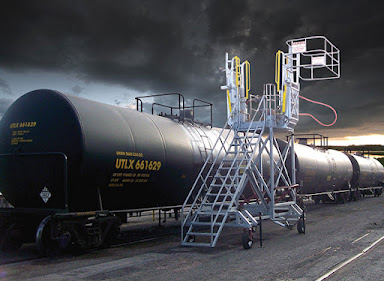The Top Three Tank Truck Safety Hazards : Do You Know the Risks?
There’s no getting around it: Your throughput depends on the loading, unloading and cleaning of tank trucks. Without proper safety solutions and equipment, these tasks are incredibly dangerous for your employees and drivers. Even the most seasoned workers could experience serious injuries or even death depending on the tasks they have to accomplish, the training they’ve been through and the protection they’re provided. Do you know the risks your drivers and workers face when accessing the tops and insides of tank trucks? Learn the top three hazards they may encounter and how to protect them with the right mix of equipment and training. Tank Truck Safety Hazard #1: Falling Off The Top Of The Tank In most cases, accessing the tank for loading and unloading means your employee has to climb on top of the tank to open a hatch or compressed air valve. Without the proper prevention or protection, simply standing on the top of the truck puts your workers at risk for serious injuries from ...








